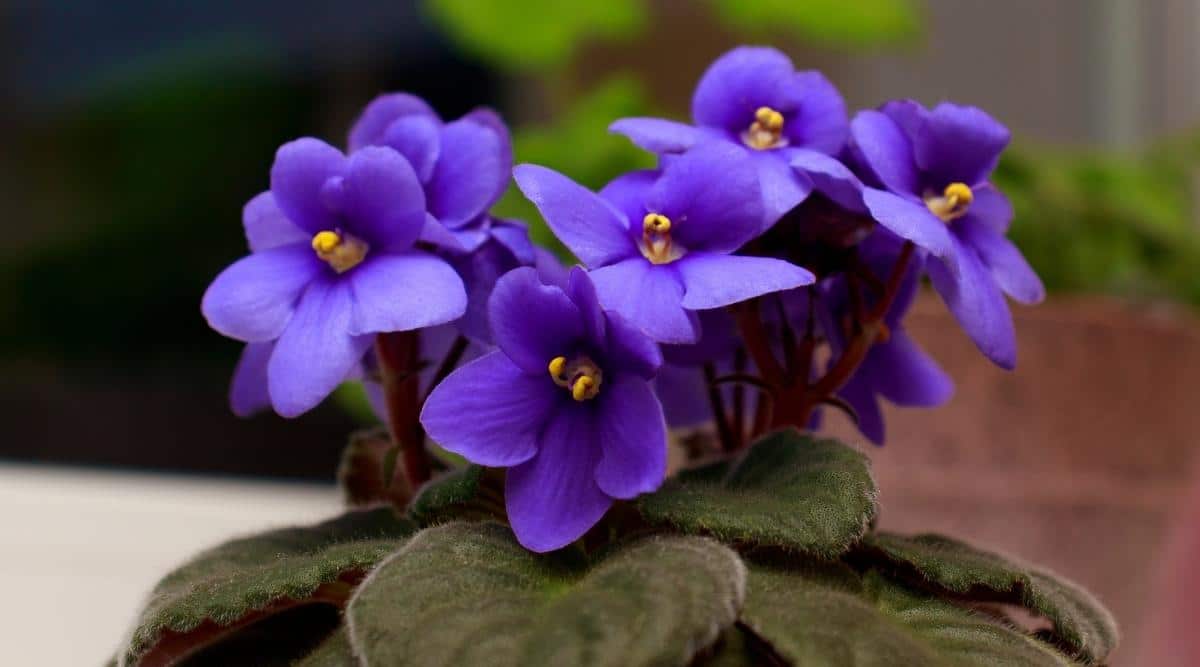journalofserviceclimatology.org – The African Violet, known botanically as Saintpaulia, is one of the most popular houseplants worldwide, celebrated for its compact growth, colorful flowers, and ease of care. Native to the mountainous regions of Tanzania and Kenya, this charming indoor plant has become a favorite among plant enthusiasts for its ability to bloom year-round, adding a vibrant splash of color to homes. With a variety of colors and sizes, African violets are versatile plants that thrive with just a little attention.
Key Features of the African Violet
- Compact, Rosette Growth Habit: African violets are small, compact plants that grow in a rosette shape, making them ideal for windowsills, desks, or small spaces. Their thick, fuzzy leaves form a neat and attractive base from which their blooms emerge.
- Vibrant Flowers: One of the main attractions of African violets is their beautiful flowers. The blooms come in an array of colors, including purple, pink, white, blue, and even multicolored varieties. The flowers are typically small and delicate, with five to six petals, and they bloom in clusters above the plant’s foliage. With proper care, African violets can bloom nearly year-round.
- Variety of Sizes: African violets come in a wide range of sizes, from miniatures that grow just a few inches wide to larger varieties that can spread up to 12 inches across. This variety makes them versatile enough to fit in any space, whether you’re looking to add greenery to a tiny windowsill or create a statement plant display.
- Low-Light Tolerance: Unlike many other flowering plants, African violets do not require direct sunlight to thrive. They do well in bright, indirect light, making them perfect for indoor environments. Their ability to bloom in low-light conditions makes them an excellent choice for apartment dwellers or homes with limited natural light.
- Easy Propagation: African violets are easy to propagate from leaf cuttings, making them a fun and rewarding plant for novice gardeners or those looking to share their plant with friends. Simply take a healthy leaf, root it in water or soil, and within a few weeks, new plants will start to form.
Growing and Caring for African Violets
- Light: African violets prefer bright, indirect light. A north- or east-facing window is often ideal, as too much direct sunlight can scorch the leaves. If natural light is limited, fluorescent grow lights can be used to provide the necessary light for blooming.
- Watering: African violets are sensitive to overwatering, so it’s important to keep the soil consistently moist but not soggy. Water the plant from the bottom by placing the pot in a saucer of water, allowing the plant to absorb moisture through the drainage holes. Avoid getting water on the leaves, as this can cause spots or rot.
- Humidity: These plants thrive in moderate humidity. If your home is particularly dry, consider placing a humidity tray under the plant or using a room humidifier to create a more favorable environment.
- Soil: African violets prefer well-draining soil that is slightly acidic. Use a potting mix designed specifically for African violets or a blend of peat moss, perlite, and vermiculite to ensure proper drainage.
- Fertilizing: Feed African violets with a balanced fertilizer designed for flowering houseplants every 4-6 weeks during the growing season. Fertilizers formulated specifically for African violets are also available and provide the right nutrients for healthy growth and blooming.
- Pruning and Grooming: Regularly remove dead flowers and yellowing leaves to encourage healthy growth and continuous blooming. African violets also benefit from periodic repotting, especially if they become root-bound.
Common Issues and Solutions
- Leaf Spots: Water spots on leaves are common if water comes into contact with the foliage. To avoid this, water the plant from the base or use room-temperature water if you must water from above.
- Overwatering: African violets are prone to root rot if overwatered. Ensure that the soil is well-draining and that excess water is removed from the saucer after watering.
- Lack of Blooming: If your African violet isn’t blooming, it may not be getting enough light or nutrients. Ensure the plant receives sufficient indirect light, and fertilize regularly to promote blooming.
African Violets in the Home
African violets are perfect for adding beauty to indoor spaces. Their compact size and ability to bloom in low light make them ideal for windowsills, side tables, or as part of a larger houseplant collection. In addition to their aesthetic value, African violets are known to improve indoor air quality by purifying the air and increasing humidity levels.
Due to their wide variety of flower colors and leaf shapes, African violets are also popular among collectors. With proper care, these plants can live and bloom for years, making them a wonderful long-term addition to any home.
Conclusion
The African Violet is a versatile, easy-to-grow plant that provides vibrant blooms year-round with minimal care. Its compact size, tolerance for low light, and stunning flowers make it a favorite choice for indoor gardeners. Whether you’re a beginner or an experienced plant enthusiast, African violets offer beauty, charm, and satisfaction in any home environment.
